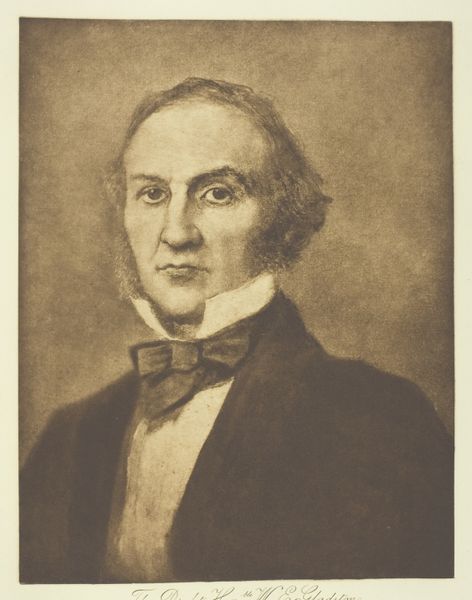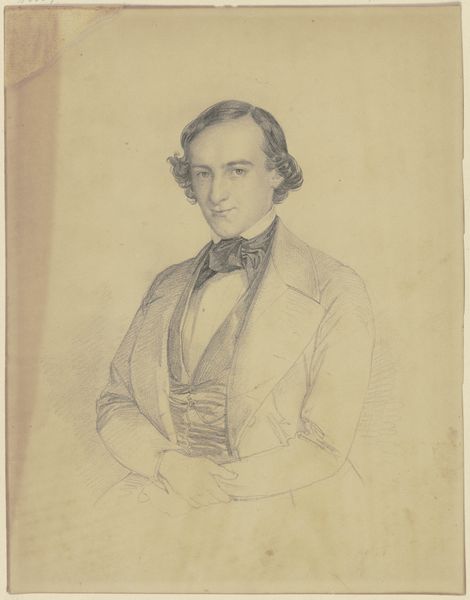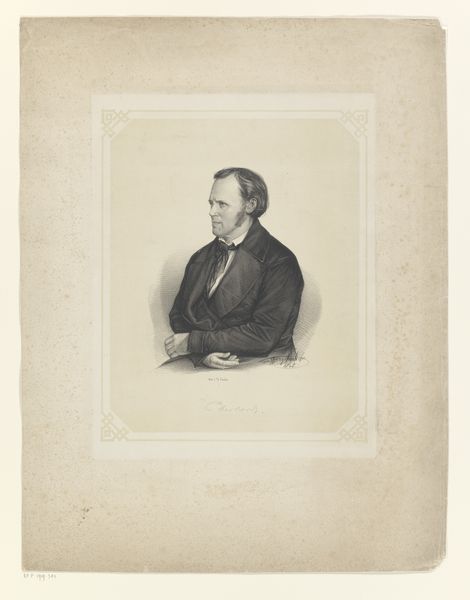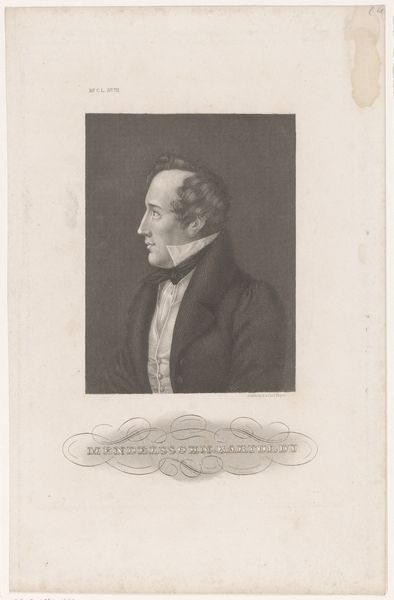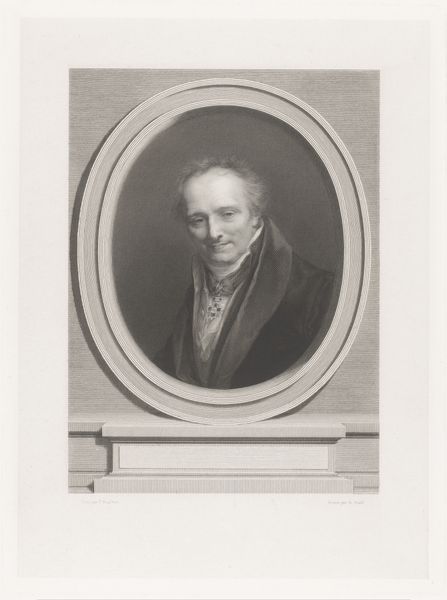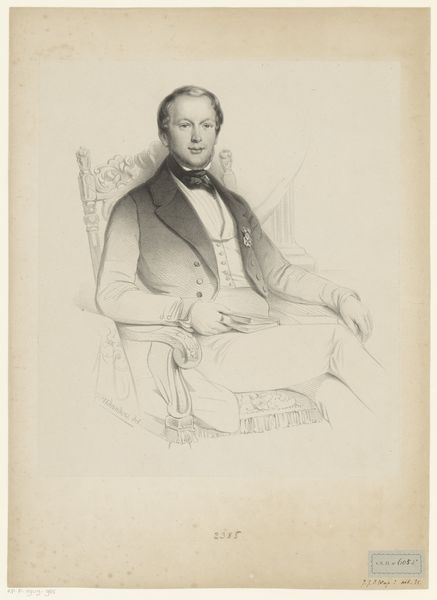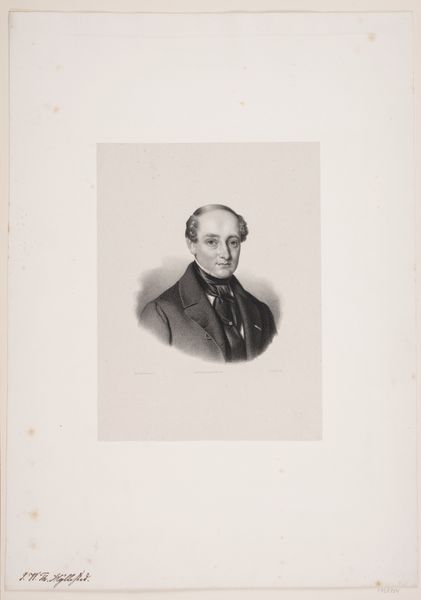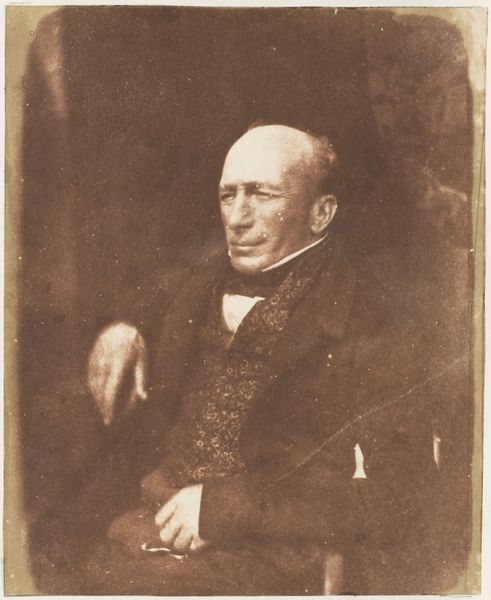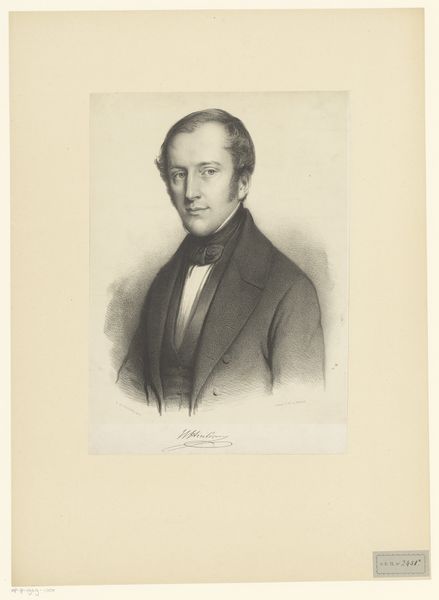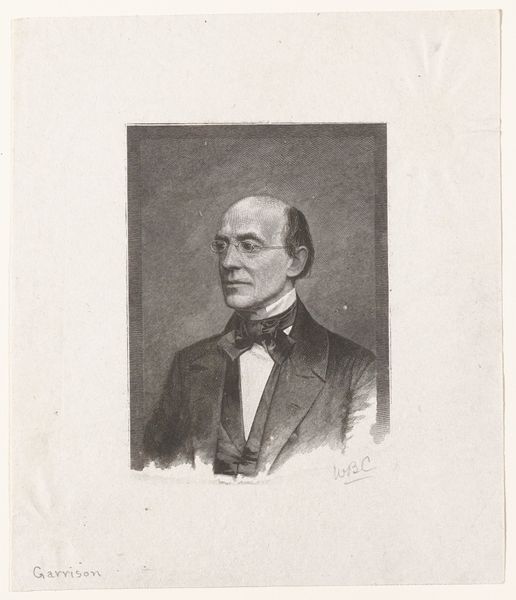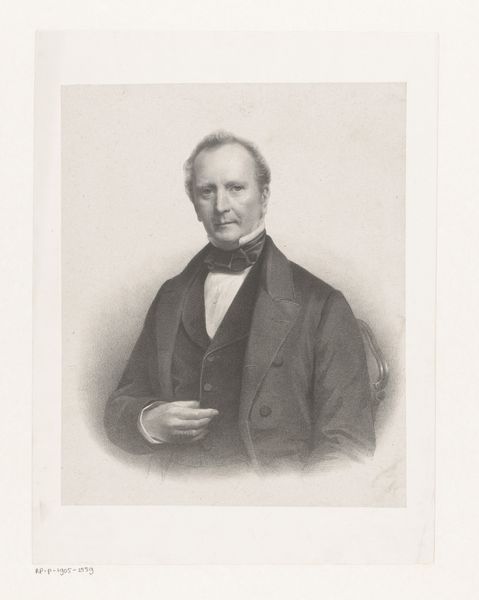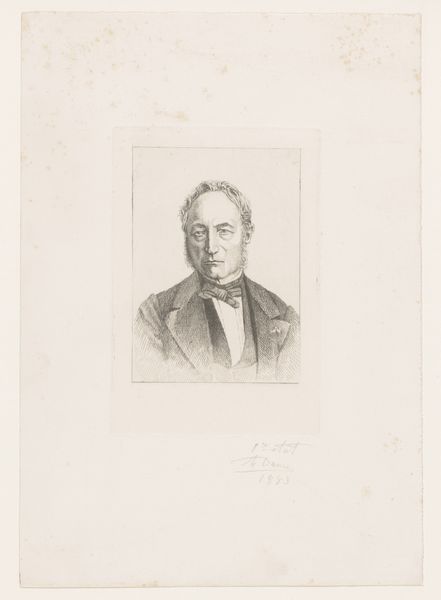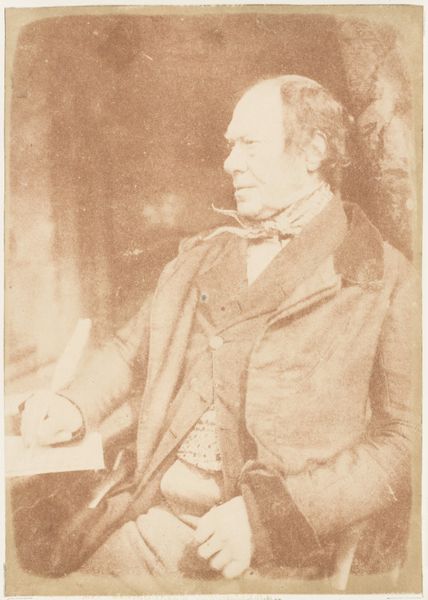
drawing, chalk, charcoal
#
portrait
#
drawing
#
16_19th-century
#
romanticism
#
chalk
#
charcoal
Copyright: Public Domain
Curator: Standing before us is Joseph Günther’s "Bust of the Painter Veit Hanns Schnorr von Carolsfeld", a portrait created in 1838. What strikes you first about this drawing? Editor: An overwhelming sense of serenity. It’s like he’s holding his breath, suspending judgment… almost as if time is on pause. The limited palette makes me focus on his expression. Curator: Günther employed charcoal and chalk on paper. There's a gentle smokiness achieved through the medium that mirrors the Romantic era's fascination with introspection. It's now housed in the Städel Museum. Editor: It’s fascinating how even within the confines of portraiture, Romantic ideals find expression. There's no grand landscape, but the inner landscape seems vast. I can imagine this artist being stifled in very conservative times in art and society at large. The subject must be feeling this lack of air. Curator: I appreciate that reading. And portraiture certainly held a particular power during this time. Artists had the opportunity to portray character, profession, social class… to document humanity’s journey and create visual biographies. The lines around his eyes… that tells me about perseverance. He could have also been going blind; I feel for this man. Editor: Yes, and it's equally important to remember portraiture as a form of asserting power and status, both for the sitter and, of course, the artist. Look at how Günther rendered Schnorr von Carolsfeld's gaze. Confident but not aggressive, which I imagine in part speaks to Schnorr's position within the artistic establishment. What are the conditions that made this position available only to a certain group of artists, particularly males from white European countries? What kind of struggles had to be navigated? Curator: Absolutely. These are crucial questions. Looking at this portrait through that lens allows us to consider these power structures. He has definitely lived! Editor: Thinking about this portrait as a study in contrasts—soft charcoal rendering a character of notable character!—illuminates more than just artistic technique, but the era. Curator: Well said! This has opened up a window not just to a face, but also to a whole period of time, its artistic ambitions and political struggles, all contained within the strokes of chalk and charcoal.
Comments
No comments
Be the first to comment and join the conversation on the ultimate creative platform.
